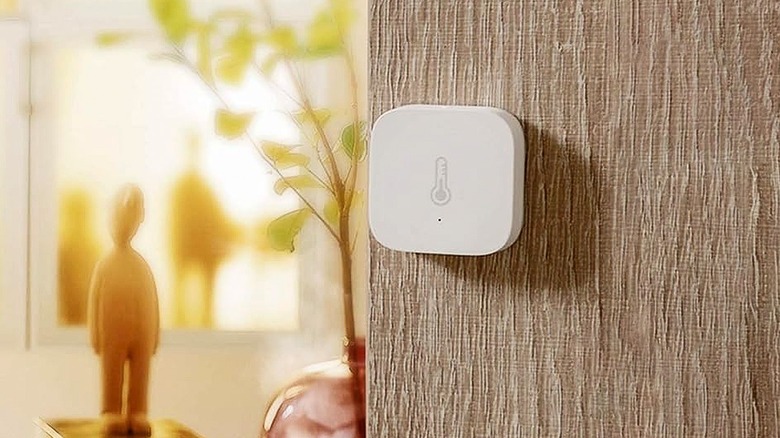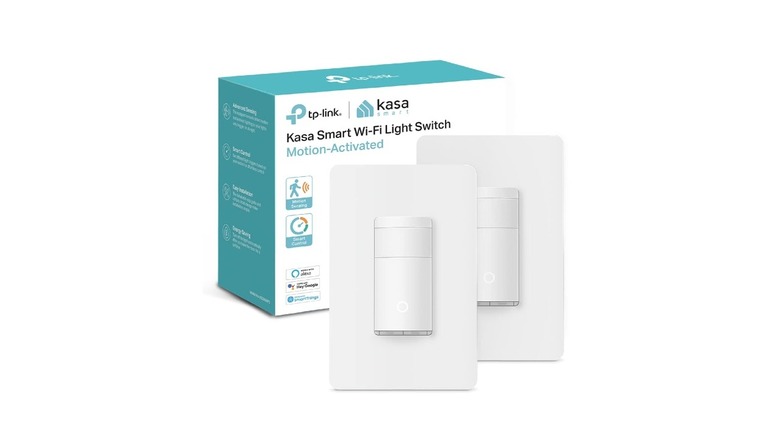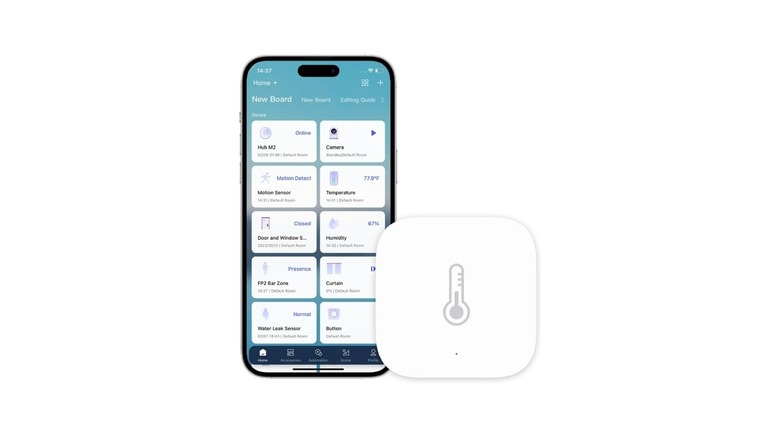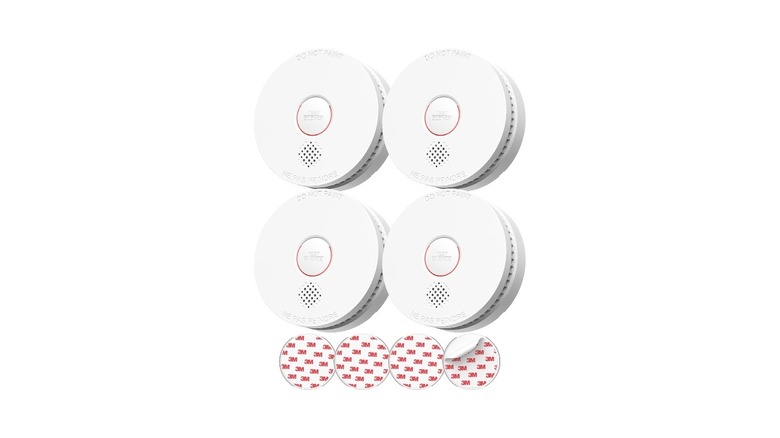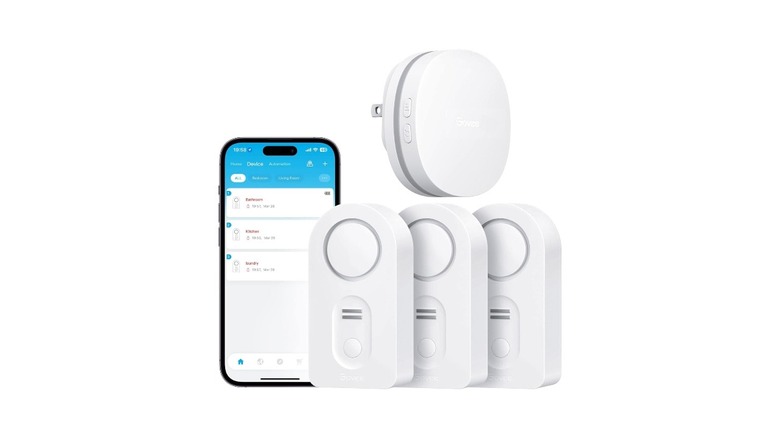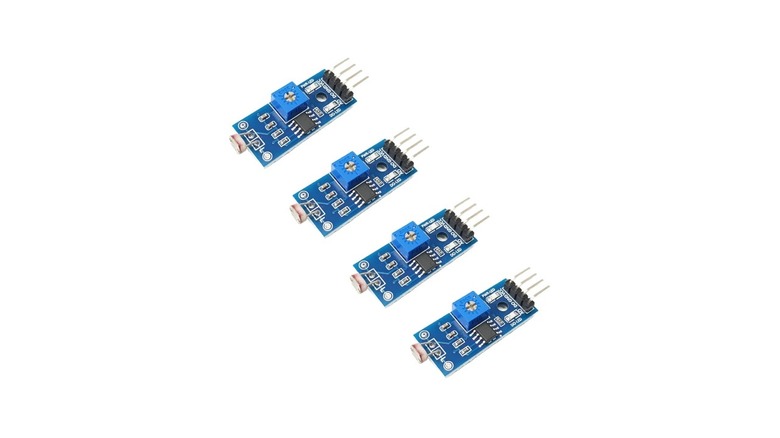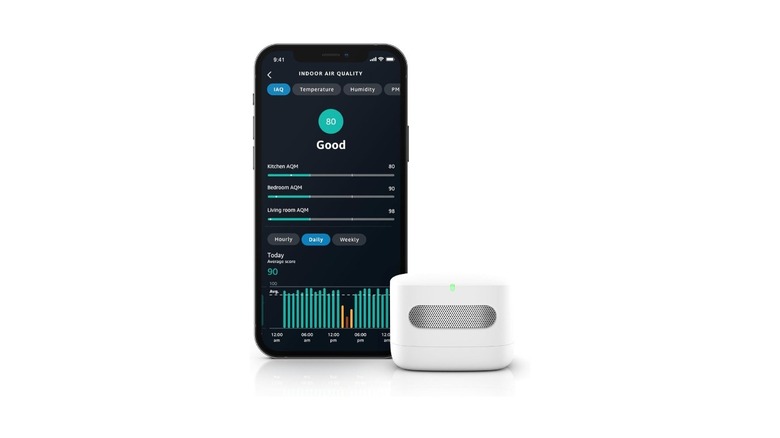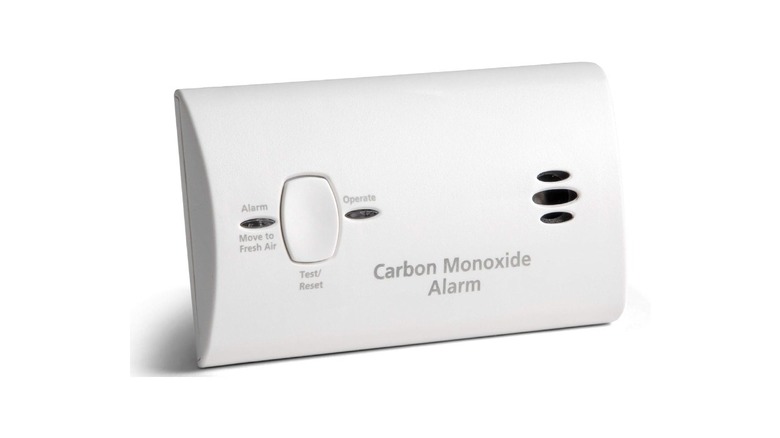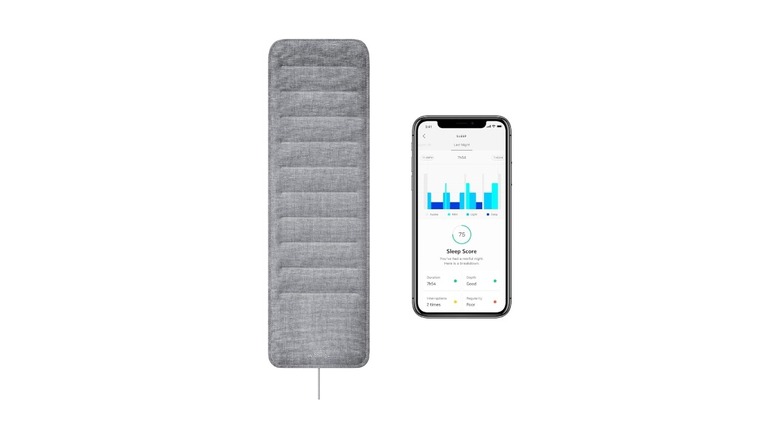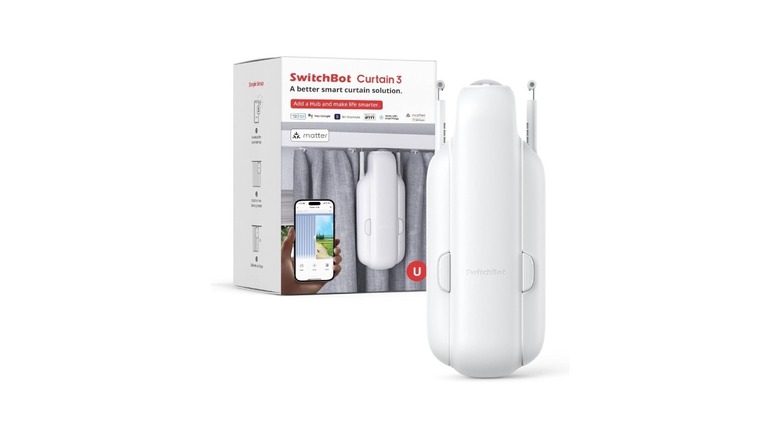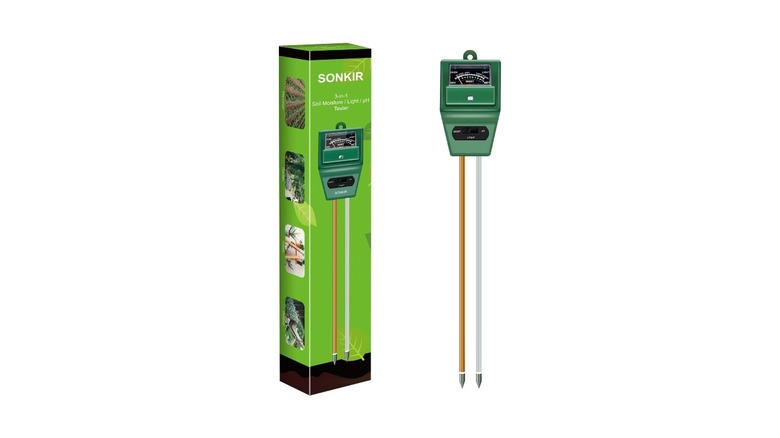10 Useful Smart Sensors For The Inside Of Your Home
We may receive a commission on purchases made from links.
Apart from the usual set of devices like Wi-Fi security cameras and smart lights, there are several lesser-known smart gadgets that can add a lot of value to your daily life. Among them are smart sensors that can be used across the house. These smart sensors can be used for various purposes, like determining the ambient temperature, checking the moisture in the soil, and even alerting you in case of emergencies. Moreover, some sensors can even be connected to your Wi-Fi network and linked with smart home hubs to create automation and routines. For instance, you can use a temperature sensor to turn on the AC at home as soon as the temperature reaches a certain mark. This is just a small example of the convenience you can achieve with various sensors spread across your home.
Since it would be challenging to find all the different types of sensors in one place, we decided to put together a list of some of the best smart sensors you can use inside your home. These sensors can be beneficial to a large set of people since we've included products that are both affordable and can trigger simple functions like toggling lights, opening and closing curtains, etc., that most people do daily but can now be automated.
Some sensors can work as standalone devices, while others may need a dedicated hub. Ensure you have the relevant hub for such devices before picking them up.
Kasa smart motion sensor switch
One of the first products that comes to mind when someone mentions sensors is a motion sensor. It's one of the most widely used sensors, not only in homes but also in commercial spaces. A motion sensor is generally used to turn on lights when someone enters a room or region and turn them off when they leave. This is an extremely efficient way to operate the lights while also saving electricity whenever possible. If you want to implement something similar at home, the TP-Link Kasa smart Wi-Fi light switch is the product you need. The main advantage of using this product is that you can automatically turn on a light source when you walk into a part of your home in the dark. This way, you don't have to look for the light switch at night.
It's also useful if you forget to turn off the lights in your room before leaving. Simply add one motion sensor switch to every room in your home, and you will immediately start seeing a difference in the power consumption since the lights will automatically turn off when you exit a room. Along with motion, the Kasa smart switch can also be activated based on the time of day. The lights can turn on automatically after sunset and turn off after sunrise. You can use this setting in common areas around the house. You can also set schedules for the lights to turn off when you go to sleep every night.
Aqara temperature and humidity sensor
While motion sensors are quite popular, temperature sensors like the Aqara temperature and humidity sensors aren't as common. However, they're equally useful since they perform two different functions. For starters, a temperature sensor can display the current ambient temperature either on the sensor itself or in the accompanying smartphone app. Since this also has a humidity sensor built in, it can also display those values in the app. Simply knowing the room's temperature may not be of much value, which is where the ability to set routines by connecting to a smart home hub comes into play. The Aqara sensor supports the Zigbee protocol and can hence connect to any of the best smart displays or hubs that also support the same protocol.
Once connected, you can also link your smart AC or humidifier to the hub and run smart routines. For example, you can set the AC to turn on as soon as the Aqara temperature sensor reports a reading over a set threshold. Alternatively, you can choose to turn on the heater if the temperature drops below a certain value. These types of routines are handy since you don't have to manually keep track of the ambient temperature to turn on the AC or heater. With a smart thermostat, you can also set the exact temperature you want the room to achieve when the ambient temperature hits a certain value. The same type of routine can be applied to smart humidifiers as well.
Siterlink smoke detector set
Smoke detectors are essential parts of every home. They are vital since smoke can be fatal and needs to be detected early so that necessary actions can be taken to mitigate any risks. Generally, smoke detectors are installed in the kitchen, but you never know when a fire can be caused in other parts of the house due to a short circuit or other reasons. As a result, getting a set of smoke detector alarms like the Siterlink smoke detector set that you can install across various regions inside your home is advisable. These are small units with double-sided tape that can be stuck onto the ceiling and don't need any sort of wiring or power connection. This is because they run using replaceable batteries.
The brand claims that it's using a special type of technology that can not only detect smoke caused by fire but via other means as well. This makes it safer compared to some other options in the market. When the sensor detects smoke, it sounds an alarm of 85dB, which is loud enough to alert the entire house. The included battery lasts for months, after which there's a built-in indicator asking users to replace the battery. Since you get four sensors in the pack, this is a value-for-money offering you can consider installing in every single room at home.
Govee Wi-Fi water sensor
Apart from smoke, another risk factor at home could be water. Excessive water leakage can cause flooding or short circuits that can be dangerous. Moreover, detecting water leaks early is difficult without dedicated devices, so we recommend getting the Govee Wi-Fi water sensor. This pack consists of three sensors that you can install in your basement, bathroom, and kitchen. The sensors detect water leakage and notify the user using the companion smartphone app. Along with the notification, the brand also bundles an alarm that needs to be plugged into a wall outlet at all times. The 100dB alarm goes off as soon as a leak is detected inside the house.
While this pack consists of three sensors, the hub supports connecting to 10 such sensors, so if you have a bigger home, you can purchase individual sensors separately and link them to the same device. Not only is this useful for detecting leaks caused by faulty pipes or taps, but it is also useful for determining if your ceiling has any faults and if it allows water to drip through inside. Owing to this, you can also install the sensors in balconies or rooms inside the house where you store valuable items and furniture. It's also a good idea to install the sensors near your washing machine or dishwasher since these appliances can also leak water and cause flooding.
DIYables LDR for Raspberry Pi and Arduino
Light-Dependent Resistors, or LDRs, are resistors whose resistance values depend on the light incident on them. The resistance value decreases when more light hits the resistor, which means more voltage passes through. When there's low or no light, the resistance value is high, which means the voltage can either be zero or extremely low. Using this working principle of LDRs, you can create several automations by building your own smart home system. For example, the DIYables LDR circuit can be used with Arduino boards, Raspberry Pis, or other SBCs. Once you interface the LDR with the controller, you can use it to trigger multiple functions.
For instance, you can mount the LDR at a window and choose to turn on the living room lights as soon as the intensity of light incident upon the resistor reduces, i.e., it gets dark outside. Additionally, you can choose to open or close the window blinds based on how sunny it is outside. Inside the house, you can set the table fan to turn on automatically as soon as you turn on your table lamp, so you only have to toggle one device, and the other one is automated. The possibilities are endless. You get a set of four LDR circuits at an extremely affordable price, so you can build multiple projects.
Amazon smart air quality monitor
It's becoming increasingly important to breathe clean, high-quality air with as few PM2.5 particles in the air as possible, so it's a good idea to keep track of the air quality inside your home. If the quality is bad, it's advisable to get an air purifier to clean the air around you. Apart from that, there are some other factors that also contribute to poor AQI. Keeping a tab on the air quality can also tell you when you need to perform certain functions. For example, a slightly higher AQI can be caused by the windows at home being open and externally polluted air entering inside.
AQI levels can also spike up when cooking, so using a chimney can result in better air quality. However, if none of these methods help lower the AQI levels and your sensor still reports high AQI levels, it's time to get a dedicated air purifier. To ensure you don't have to turn on the air purifier every time the AQI shoots up, the Amazon smart air quality monitor has support for routines, so you can connect your smart air purifier to it and turn it on automatically as soon as the AQI level crosses a certain threshold. It can also display the AQI of specific sections of your house in one place if you place a sensor in each room, which is handy if you stay in a large house.
Kidde Carbon Monoxide detector
While poor air quality is harmful, what's worse is the presence of Carbon Monoxide or CO in the atmosphere. CO can be fatal since it cuts off the oxygen to the lungs, so it's vital to ensure there are no traces of CO in any part of your home. The Kidde Carbon Monoxide detector aims to do exactly this via an affordable and portable sensor. Unlike smoke detectors that have to be mounted in one place inside a room or section of the house, the Kidde CO detector can be placed on any surface since it uses an electrochemical sensor to determine the presence of CO. It runs using two AA batteries and, hence, workers without any external wiring or power supply. The compact design is not only easy to store on a tabletop but also makes it ideal to carry around during vacations.
The point is to be safe from Carbon Monoxide even when you're staying at a hotel during a holiday since these sensors may not necessarily be present inside hotel rooms. If there is an alarming level of CO in the atmosphere, a red LED on the detector will start blinking along with a loud alarm indicating danger. Unlike smoke, Carbon Monoxide is both colorless and odorless, so there's no way of telling if it's present in the air around you without using a detector like this. Considering the low price and its ability to save lives, it's a must-have.
Withings sleep tracking pad
Lots of people use a smartwatch from a reputable manufacturer like the Apple Watch or the Amazfit Active 2 on the lower end of the spectrum. If you're uncomfortable wearing a watch to bed, you can also opt for a smart ring from a good brand. However, if that also doesn't float your boat, you can resort to using a smart sensor for your bed like the Withings sleep tracking pad. It's a pad that goes under your mattress and tracks your sleep every night. This way, it's non-intrusive since it doesn't have to be worn throughout the night, so there's no chance of it causing any discomfort. However, note that it needs to be plugged into a wall outlet for it to work all night. Ensure you have a free socket close to your bed.
As for the accuracy, the brand claims that the tracking is clinically tested. While there's no way to test that claim, reviews indicate solid accuracy that's comparable to any wearable for measuring the various stages of sleep. All the data is automatically synced to the companion app, which you can also then transfer to Google Fit or Apple Health. Along with sleep tracking, the Withings pad can also detect snoring, which is a nice touch. Notably, the pad only works for one person, and you have to sleep specifically on the side of the bed where the pad is resting. Otherwise, the data will be skewed.
SwitchBot automatic curtain opener
Imagine waking up every morning to curtains that automatically open with sunrise. Well, it doesn't have to be limited to your imagination anymore, thanks to the SwitchBot Curtain 3. It's a smart curtain opener that connects to your Wi-Fi network via the companion app. Then, the curtains can be controlled either via the app or using voice commands. Apart from these functions, the SwitchBot also provides the ability to set schedules for opening and closing. You can set the curtains to open at a certain time of the day and close before you go to bed. However, that's not where the automation ends.
Since the SwitchBot is compatible with Matter and other smart home ecosystems, you can use the LDR circuit mentioned above with a Raspberry Pi to program the device in such a way that the curtains open as soon as the light incident on the resistor hits a certain value, and close when it gets darker. You can get multiple SwitchBot controllers for curtains all over the house and sync them with a single LDR reading. The curtain opened itself is strong enough to hold curtains up to 16 kilograms and operates in a silent mode to ensure someone who is sleeping during the operation doesn't wake up. If you want to automate every part of your home, this is an excellent solution for a relatively affordable price.
Sonkir soil moisture and pH meter
The best part about some sensors and gadgets is that they don't always have to rely on electronics or power to work. The Sonkir soil moisture and pH meter, for example, does not use any batteries or power source. This is because the meter uses passive light sensors and chemistry to function and display results. All you have to do is dip the probes into your planter or pot to get accurate readings in a matter of a few seconds. The Sonkir tester measures three main parameters: moisture in the soil, the soil's pH level, and the amount of light falling on the plant. These are all essentially for a plant's growth.
Due to the long probes, you can use the Sonkir soil meter with small pots inside your home or even if you have a small garden in your backyard. In fact, it can also be used to determine the health of grass on your front porch. Apart from this, you can also use the meter to determine whether the soil you have is fit for growing plants or not. This way, you can replace any soil that's unfit before growing your favorite plants. Otherwise, it may result in poor yield. Sonkir has made the device accessible to the masses thanks to the extremely low price, so it's definitely worth having if you're into gardening.
